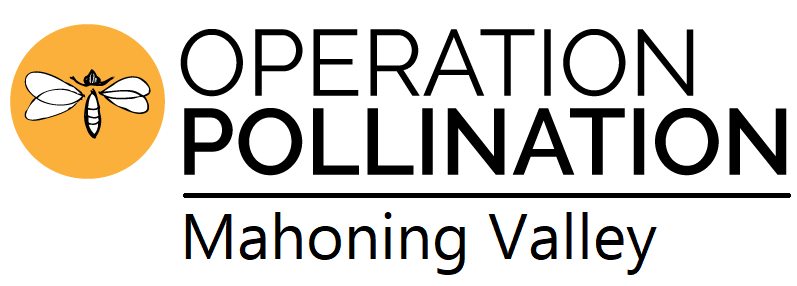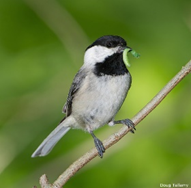
Chickadees Need Native Trees
In 2013, the University of Delaware and Smithsonian Migratory Bird Center (SMBC) conducted a three-year research project to investigate how nonnative trees in cities and suburbs affect the availability of food for birds during the breeding season. The research focuses on the Carolina chickadee, “a common backyard species that, like most birds, feeds insects to its young,” says Desiree Narango, a doctoral student who conducted the project with help from a team of field assistants.

Ninety-six percent of terrestrial birds rear their young on insects, and caterpillars are a particularly important food source. During the breeding season, Carolina chickadees and other birds need a lot of insects—in the case of chickadees, more than 5,000 per clutch of hatchlings.
Contrary to popular belief, “most birds do not reproduce on berries and seeds,” explains Doug Tallamy, an entomologist at the University of Delaware and one of Narango’s advisors. “Ninety-six percent of terrestrial birds rear their young on insects.”
Because native insects did not evolve with nonnative plants, most of them lack the ability to overcome the plants’ chemical defenses so cannot eat them. Caterpillars, a particularly important food source for birds, are especially picky about what they feed on. Like the famous monarch butterfly larva, which must have milkweed to survive, more than 90 percent of moth and butterfly caterpillars eat only particular native plants or groups of plants.
From the research some clear patterns have emerged that we hope will convince homeowners to plant more insect- (and bird-) friendly natives. They include:
Although native and nonnative plants seem to host similar numbers of insects, native trees support more of the caterpillars birds need to feed their young as well as “a more diverse suite of insect herbivores and predators.
Nonnative plants are good at supporting aphids and scale insects, which chickadees—as well as gardeners—tend not to like.
Chickadees prefer to forage on native trees, overwhelmingly so. If you have a lot of trees that are not native, to the birds, it’s almost as if there are no trees at all.
Based on their videos, the researchers also discovered that parent birds vary from site to site in how many times they visit a nest with food as well as how many food items they bring each visit. While some arrive with a single caterpillar, others show up with a beak full of three to four insects. “It seems that some chickadees have to work a lot harder to bring back enough food to raise a clutch,” Narango says. “After analyzing the data, we should be able to relate this effort to a site’s dominance by native or nonnative trees.”
Good choices - American elm, black cherry, and oak.
LAURA TANGLEY